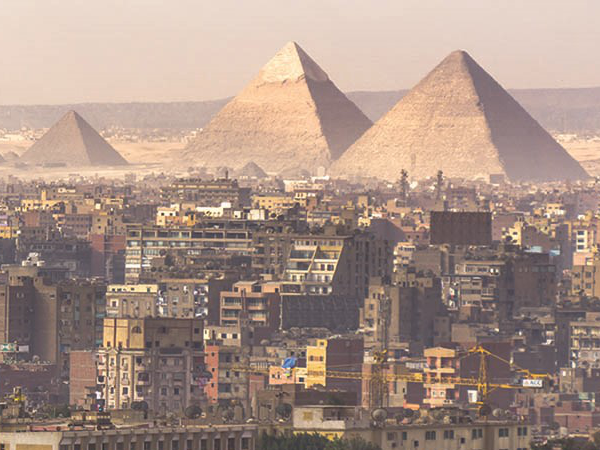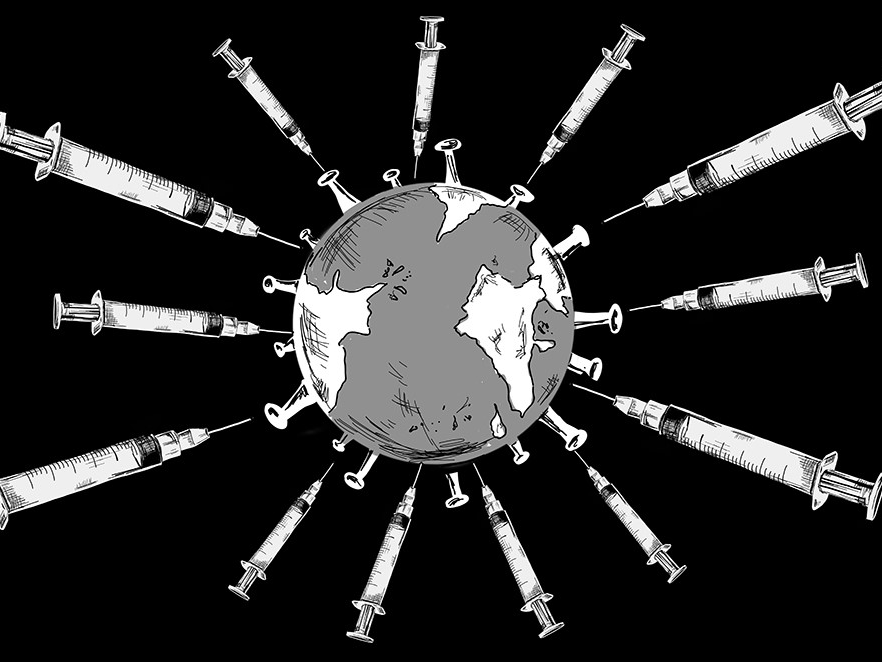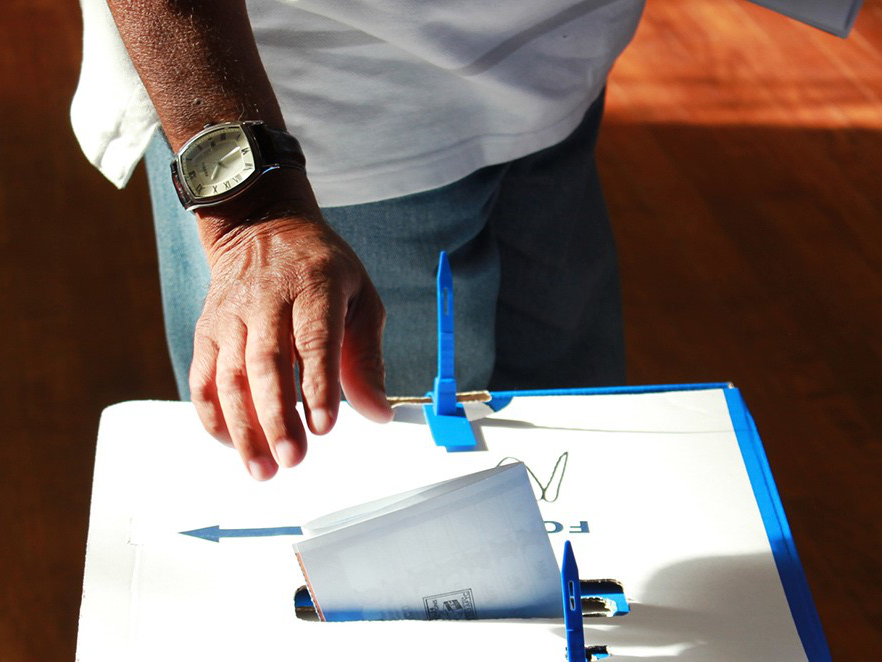As an investment destination, North Africa is a strategically important part of any investor’s Middle East & Africa strategy. It is a big region strategically located as a gateway to Europe, Asia, and the rest of Africa, it enjoys attractive demographics, and has some of the highest standards of education in the region. Tunisia has the highest student enrolment ratio in Africa, Egypt is the third largest economy in Africa, and Morocco the one country to emerge from the Arab Spring largely unscathed. The region has shown marked signs of recovery on many fronts – for instance tourist arrivals in North Africa jumped by 22% in 2017 on the back of a much more stable geopolitical environment. This is welcome news not just for the region’s growth, but also for employment, hard currency inflows, and stability. However, despite improvement on several fronts, North Africa continues to grapple with persistent macroeconomic imbalances and economic inequality, creating a constant risk of social unrest.
The recent upward movement in oil prices negatively impacts the public finances of Egypt, Tunisia, and Morocco as net oil importers, but benefits Algeria as the largest producer and exporter of oil in North Africa. Two years ago, in a previous issue of the Macro Forum Newsletter, we argued that the economies of North Africa were facing what the IMF’s ex Chief Economist Maurice Obstfeld described 20 years ago as the “developing countries trilemma”; which says that a country cannot simultaneously maintain fixed exchange rates and an open capital market while pursuing a monetary policy oriented towards domestic goals. North African economies wanting to maintain the efficacy of their monetary policy thus had only two options: introducing controls to block the mobility of capital, or liberalizing their exchange rate markets and leaving FX rates to be determined by the forces of demand and supply. We argued that the second option seemed much more palatable for North Africa. Two years on, much progress has been done on structural and currency reforms, and there is reason to believe that North Africa’s economies are gradually moving out of the woods.
First Egypt; the largest and most populous market in North Africa. Egypt is structurally recovering, and rebalancing. By 2020 there will be 100 million Egyptians, better educated than ever before with adult literacy rates now at c. 75%, with competitive wages (minimum wage in Egypt in US$ terms is half that of Tunisia, and one-quarter that of Morocco), and the necessary power and infrastructure network to support industrialization. President Sisi was re-elected for a second four-year term in March. He has repeatedly reiterated, and so far proven, his commitment to an ambitious structural adjustment and reform program, spearheaded by (a) currency market liberalization and (b) a 3 year IMF program which is now in its second year and progressing according to plan. On 17th May, the IMF and the Egyptian Government reached a staff-level agreement on the third review of Egypt’s economic reform program, which should pave the way for disbursement of US$2 billion, bringing total disbursements under the IMF program to US$8 billion.
The menace of inflation which has been a big problem in 2017 is now being brought under control, with inflation expected to fall to c. 12% in June. The 2018/19 budget was approved by parliament on 5th June and it shows a healthy primary surplus of 2% (for the first time in 8 years) buoyed by growth expanding to c. 6%. Government debt has dropped from c. 103% of GDP in June 2017 to an expected c. 90% in June 2018, and the IMF expects it to gradually fall to 72% over the next 4 years; the budget deficit is expected to be 9.2% of GDP in June 2018 (down from over 12% two years ago). Sovereign reserves hit an all-time high of c. US$ 44.1 billion in May, equivalent to c. 8 months imports cover. The FX rate has recently weakened by c. 2% to 17.96 to the US$, largely due to seasonal effects, but despite a strong run last year the Egyptian Pound is only marginally undervalued compared to what we believe to be long-term fair value. The direction of travel is positive, and S&P has raised Egypt’s credit rating from B- to B with stable outlook in May on the back of the accelerating pace of reforms. On the flip side, inflation can be expected to spike again in FY 2018/19 on the back of the next round of electricity and fuel subsidy cuts planned for July, and this will be painful to the masses due to its spillover effects on the prices of basic goods and services like food and transportation – especially given that salary increases have not kept up pace with inflation. Also, despite the ambitious reform plans and the improving macro environment, FDI figures have not yet lived up to expectations as foreign investors have so far chosen the easy way in through carry trades and continue to wait for stronger signals of sustained stability and growth as well as an acceleration in domestic investments before going strongly into equities. The CBE cut base rates by 200 bps earlier this year, and there are expectations of a further 200-300 bps cut later this year; this should catalyze private credit (and capex) growth. In summary, the direction of travel remains positive in Egypt, with the reform program continuing at pace. On the ground, the price of the reforms is painful for the lower and middle class, but the Government is diverting a lot of resources into social welfare programs to provide a safety net for the poor. It will be interesting to see how the next round of subsidy cuts will be received by the average man on the street… who has so far been surprisingly patient and accepting of the side effects of the reforms.
Morocco, another big market with c. 36 million people has arguably been a poster child for stability in a turbulent region over the last 5 years. Growth has historically been heavily dependent on agricultural production where an anticipated cyclical downturn is expected to reduce growth from 4.1% in 2017 to c. 3.2% in 2018. However, the country has had marked improvements in the composition of its economic activity. The industrial sector continues to enjoy strong investment, particularly in the value-added manufacturing industries. Tourism also continues to be a key driver of growth, with tourist arrivals remaining consistently above 10 million in the last two years (and expected to be at similar levels in 2018). Over the next few years, growth will be fueled by continued reform efforts to improve labor participation and efficiency, increased access to finance through growth in NBFIs, and continued improvement in the quality of education. Combined, these factors should have a marked positive impact on the business environment.
In January 2018, the Government moved towards a more liberal exchange rate environment, allowing the Dirham to fluctuate within a wider band. More liberalization is needed on this front, but inflation targeting continues to be at the center of the exchange rate policy framework. The Dirham is undervalued by as much as 30% according to our fair value model, and that absence of devaluation pressures probably lends itself to a more gradual shift in the exchange rate policy. The Dirham is predicted to depreciate against the Euro, while strengthening against the dollar this year. Inflation remains under control and is forecast to accelerate from c. 1% in 2017 to c. 2% in 2018, mainly due to oil prices.
On the public finances front, the current account deficit is expected to drop to c. 5% of GDP in 2018 and c. 4.3% of GDP in 2019, driven by growth in tourism, exports, and workers’ remittances. The country will however remain dependent on imports of food, energy and consumer goods, which will keep the trade deficit from narrowing in dollar terms. However, an expected recovery in FDI, coupled with further accumulation of external debt will provide a supportive backdrop for foreign reserves to increase. Morocco’s fiscal deficit is forecast to drop from 3.5% of GDP in 2017 to 3.2% of GDP in 2018, aided by reigning in public wages. Medium term plans are also in place to increase Government investment and to reduce subsidies on fuel and key food items. Coupled with an acceleration of tax reforms to broaden the tax base, this should further strengthen the fiscal position.
On balance, the direction of travel in Morocco is perhaps the most positive in North Africa. It is a demographically young country with 45% of the population under 24 years old. It has a relatively stable currency supported by a healthy FX reserves balance of c. US$25 billion, a low inflation environment, coupled with an ambitious Governmental infrastructure investment program that is creating a positive backdrop for investors, and foreign investment is also picking up. That’s why Morocco continues to attract the attention of a growing cohort of investors given its size, diversification, and relatively stable geopolitical environment, with sectors like food, financial services, education and energy attracting significant interest.
Then there is Tunisia, which has been on somewhat of a rollercoaster ride since President Essebsi took office in December 2014. On the one hand, the country probably enjoys the highest levels of freedom and democracy in the region, but at the same time it has also had the lion’s share of protests and revolts from trade unions. Economic growth is showing some signs of recovery this year, standing at 2.5% in the first quarter of 2018- the highest since 2014- supported by agriculture and exports. The more flexible exchange rate policy also helped improve the current account deficit; and we believe that the Tunisian Dinar is c. 23% undervalued compared to fair value. Inflation is on the rise due to higher oil prices and increased growth in money supply, which may result in further tightening of monetary policy. Rising import costs, coupled with weak tourism revenues and a drop in workers’ remittances have weighed on the external position. The current account is forecast to show a deficit of c. 10% in 2018, and external debt is predicted to increase from c. 81% of GDP in 2017 to c. 87% in 2018. Last month, the IMF warned that “risks to macroeconomic stability in Tunisia, especially inflation, have increased and require a decisive response, complemented with measures to protect the poor.”
Low productivity and a reform program that is hampered by resistance to privatization, tax hikes and public-sector wage freezes from the very strong Tunisian General Labor Union (“UGTT”) probably means that GDP growth will remain at c. 2-3% in the medium-term and this won’t be of any help to unemployment, which remains structurally high. Frustrated with the governing coalition, voters gave independent candidates the biggest vote at the Municipal elections last month at the expense of both “Nidaa Tounis” and “Ennahda” governing parties. Despite that result, the Government is likely to continue being reluctant to take on UGTT for fear of instability and protests. As such, reform will only continue at a slow pace due to populist headwinds in the run-up to parliamentary and presidential elections next year. Investment activity and earnings growth in defensive industries like food, education, and healthcare continue to do well in spite of the fragile macroeconomic backdrop – which is a theme we saw five years ago in Egypt during the peak of the Arab Spring.
And finally, there is what we would describe as the sleeping giant in the region… Algeria . This is a large, and rich market that is currently stifled by its insular economic policies and its geopolitical uncertainties given imminent succession questions. Algeria today probably sits in the “watch this space” category… but this may change (positively or negatively) very soon. As usual, never a dull moment in North Africa!






